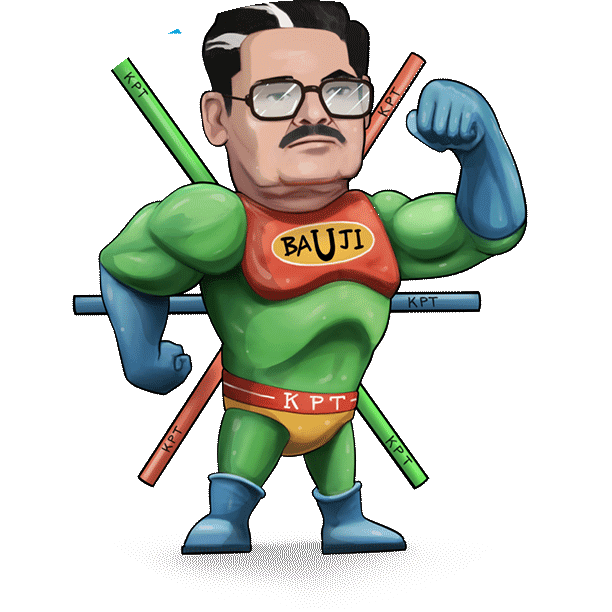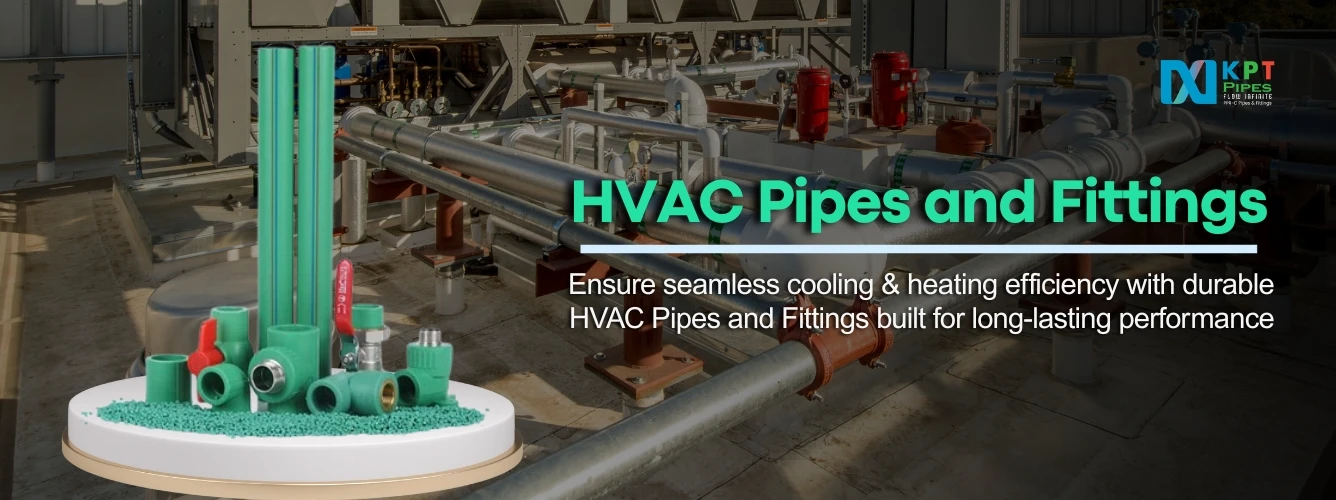Heating, Ventilation, and Air Conditioning (HVAC) systems play a crucial role in maintaining indoor comfort, air quality, and energy efficiency in residential, commercial, and industrial buildings. At the heart of these systems are HVAC pipes and fittings, which form the essential conduits that carry air, water, and refrigerants throughout the building. Understanding the types, installation practices, materials, and suppliers of HVAC piping systems is key to ensuring a durable, efficient, and safe HVAC setup.
In this blog, we will explore everything you need to know about HVAC pipes & fittings, focusing on their importance, types, materials, installation methods, insulation options, and how to select the best hvac pipe suppliers for your project.
Table of Contents
ToggleWhat Are HVAC Pipes and Fittings?
HVAC pipes are specialized piping systems designed specifically to handle the unique requirements of heating, ventilation, and air conditioning applications. Unlike general plumbing pipes, HVAC pipes must withstand variations in temperature, pressure, and chemical exposure.
HVAC fittings are the connectors, joints, elbows, tees, and other components that join the pipes together, enabling the system to direct the flow of fluids efficiently throughout the building.
Together, HVAC pipes & fittings form an integrated network called HVAC piping systems, responsible for moving refrigerants, chilled water, hot water, or air with minimal leakage and maximum efficiency.
Importance of Quality HVAC Pipes and Fittings
Energy Efficiency: Properly designed and installed HVAC piping helps minimize energy loss by ensuring smooth flow and optimal insulation. This allows HVAC units to operate at their peak efficiency. As a result, it significantly lowers energy consumption and reduces utility bills over time.
Durability and Longevity: Using high-quality pipes and fittings ensures resistance against corrosion, mechanical wear, and extreme temperature changes. This durability prevents premature failures and keeps the HVAC system functioning smoothly. Consequently, it extends the overall lifespan of the entire HVAC installation.
Leak Prevention: Superior materials combined with precision-engineered fittings create tight seals that prevent leaks. Leaks can lead to energy wastage, reduced system performance, and even costly damage to surrounding property. Effective leak prevention is essential to maintain system integrity and reliability.
Safety Compliance: HVAC piping must comply with strict industry standards and local building codes to guarantee safe operation. This is particularly crucial when the system handles refrigerants that can be hazardous if released. Ensuring compliance helps protect occupants and avoid legal or regulatory penalties.
Reduced Maintenance: Using reliable and quality components reduces the likelihood of breakdowns and frequent maintenance needs. This means fewer interruptions to the HVAC system’s operation and less downtime for repairs. Over time, this leads to significant savings in maintenance costs and enhances system dependability.
Applications of HVAC Pipes and Fittings
HVAC pipes and fittings are used across multiple sectors and applications, such as:
- Residential HVAC Systems: Pipes and fittings are essential for circulating hot and cold water in home heating and cooling setups, including underfloor heating and radiator connections.
- Commercial Buildings: Offices, malls, and hospitals rely on extensive HVAC piping systems for temperature regulation and ventilation.
- Industrial Facilities: Factories use HVAC pipes for process cooling, ventilation, and temperature control, which are critical to manufacturing and safety.
- Institutional Use: Schools, universities, and government buildings require reliable HVAC piping systems to provide safe and comfortable indoor environments for occupants.
- Refrigeration and Chilled Water Systems: Specialized HVAC pipes transport refrigerants and chilled water efficiently to maintain optimal system performance.
- Refrigeration Systems: HVAC pipes also play a role in refrigeration lines, transporting refrigerants efficiently and safely.
These diverse applications demand pipes that are resistant to pressure, temperature fluctuations, corrosion, and chemical exposure—qualities KPT Pipes ensures with its product range.
How to Choose the Right HVAC Pipes and Fittings
Selecting the right HVAC pipes and fittings is critical for system efficiency, safety, and longevity. Here are some key factors to consider:
- Material Quality: Opt for pipes made of durable materials resistant to corrosion, chemicals, and thermal stress. Greentherm (PPR-C) pipes by KPT Pipes are manufactured using polypropylene random copolymer, known for superior chemical resistance and mechanical strength.
- Temperature and Pressure Ratings: HVAC systems can experience a wide range of temperatures and pressures. Ensure the pipes and fittings selected meet or exceed these operational demands.
- Compatibility: Pipes and fittings should be compatible with existing system components, including valves, pumps, and insulation materials.
- Thermal Conductivity: Lower thermal conductivity materials reduce heat loss or gain, improving system efficiency. PPR-C pipes offer excellent thermal insulation properties.
- Ease of Installation: Lightweight and easy-to-join pipes reduce installation time and labor costs. Greentherm (PPR-C) pipes use fusion welding techniques that create leak-proof joints.
- Cost-effectiveness: While upfront cost matters, consider the total cost of ownership ,including maintenance, replacement frequency, and energy savings.
By choosing high-quality HVAC pipes and fittings such as Greentherm (PPR-C) from KPT Pipes, you ensure reliable and efficient system performance.
Installation Best Practices for HVAC Pipes and Fittings
Proper installation is vital to maximize the performance and lifespan of HVAC piping systems. Here are essential installation best practices:
- Follow Manufacturer Guidelines: Always adhere to the installation instructions provided by the pipe manufacturer to avoid compromising the pipe’s integrity.
- Use Correct Joining Techniques: For Greentherm (PPR-C) pipes, fusion welding or socket fusion is recommended for strong, leak-proof joints.
Ensure Proper Support and Alignment: Pipes should be supported at regular intervals to avoid sagging or stress. Proper alignment prevents undue stress at joints. - Account for Thermal Expansion: HVAC pipes experience temperature fluctuations; provide expansion loops or joints where necessary.
- Insulate Pipes Effectively: Use appropriate HVAC pipe insulation materials to prevent heat loss, condensation, and energy wastage.
- Check for Leaks: Conduct pressure testing after installation to detect and fix any leaks.
- Maintain Cleanliness: Keep pipes and fittings clean during installation to avoid contamination that can cause blockages or corrosion.
- Plan for Accessibility: Design piping layouts to allow easy access for future maintenance or repairs.
KPT Pipes offers technical support to ensure installers achieve the highest standards in HVAC pipe installation, reducing downtime and maintenance costs.
Latest Innovations in HVAC Pipe Technology – Greentherm (PPR-C)
The HVAC industry is continuously evolving, driven by the need for more durable, efficient, and environmentally friendly piping solutions. One of the standout innovations in this space is Greentherm (PPR-C) pipes, which represent a significant advancement over traditional materials. PPRC (Polypropylene Random Copolymer) pipes are engineered to offer superior performance in heating and cooling applications, making them ideal for modern HVAC systems.
Key Features and Benefits of Greentherm (PPR-C) Pipes:
- Exceptional Durability: Greentherm pipes are highly resistant to corrosion, scaling, and chemical degradation, ensuring a long service life even under extreme temperature and pressure conditions.
- Thermal Stability: Designed to withstand both hot and cold water circulation, PPR-C pipes maintain their integrity and shape without warping or cracking, reducing maintenance needs.
- Energy Efficiency: The material’s low thermal conductivity minimizes heat loss during transport, improving overall system efficiency and lowering energy costs.
- Eco-Friendly Manufacturing: Greentherm pipes are produced using environmentally safe processes and are fully recyclable, aligning with green building standards.
- Easy Installation: Lightweight and flexible, these pipes simplify installation and require fewer fittings, reducing labor time and potential leak points.
- Safety Compliance: Greentherm pipes meet stringent industry standards and certifications, ensuring safe use in HVAC, plumbing, and fire safety systems.
By adopting innovations like Greentherm (PPR-C), HVAC professionals can provide more reliable, efficient, and sustainable piping solutions that meet today’s demanding building requirements.
Why Choose KPT Pipes for Your HVAC Piping Systems?
When it comes to HVAC pipes and fittings, quality and reliability cannot be compromised. Here’s why KPT Pipes is your ideal partner:
- Premium Quality Products: Our Greentherm (PPR-C) HVAC pipes and fittings undergo rigorous quality testing to meet international standards.
- Comprehensive Product Range: We offer a complete range of HVAC pipes & fittings suitable for diverse applications, ensuring one-stop sourcing.
- Technical Expertise: KPT Pipes provides expert guidance on hvac pipe installation, system design, and maintenance, helping customers optimize their HVAC systems.
- Innovative Solutions: We invest continuously in R&D to bring the latest innovations, such as Greentherm (PPR-C) that improve system performance and durability.
- Reliable Supply Chain: As leading hvac pipe suppliers, we ensure timely delivery and competitive pricing for projects across India and beyond.
- Sustainability Focus: Our products are environmentally friendly, supporting energy-saving HVAC solutions.
- Customer Support: From consultation to after-sales service, we prioritize customer satisfaction and support.
By choosing KPT Pipes, you invest in HVAC piping systems that combine durability, efficiency, and cutting-edge technology, making your installations future-ready.
Conclusion
HVAC pipes and fittings form the backbone of any heating, ventilation, or air conditioning system. Choosing the right products directly impacts energy efficiency, system lifespan, and maintenance costs. Greentherm (PPR-C) by KPT Pipes stands out as a cutting-edge solution that combines durability, sustainability, and ease of installation for HVAC piping systems across residential, commercial, and industrial applications.
By partnering with KPT Pipes, you benefit from top-quality HVAC pipes & fittings, backed by technical expertise and committed customer support. Whether you are designing a new HVAC system or upgrading an existing one, Greentherm (PPR-C) offers superior performance with minimal environmental impact, making it the smart choice for today and the future.
FAQs
Q1. What are HVAC pipes and fittings used for?
Ans: HVAC pipes and fittings form the essential conduits that transport air, water, and refrigerants in heating, ventilation, and air conditioning systems. They ensure efficient temperature control and air quality in residential, commercial, and industrial buildings.
Q2. Why is the quality of HVAC pipes and fittings important?
Ans: High-quality pipes and fittings prevent leaks, resist corrosion, and withstand temperature fluctuations. This enhances system efficiency, reduces maintenance, and prolongs the lifespan of HVAC installations.
Q3. What materials are commonly used for HVAC pipes?
Ans: Common materials include copper, steel, PVC, and advanced options like Greentherm (PPR-C) pipes, which offer superior chemical resistance, durability, and thermal insulation properties.
Q4. How does proper installation affect HVAC piping systems?
Ans: Correct installation, including proper support, alignment, and joining techniques like fusion welding for PPR-C pipes, ensures leak-free operation and accommodates thermal expansion, maximising system reliability and efficiency.
Q5. Why should I choose KPT Pipes for HVAC applications?
Ans: KPT Pipes offers premium Greentherm (PPR-C) products with excellent durability, energy efficiency, and eco-friendly manufacturing. We provide expert technical support, timely supply, and innovative solutions tailored to diverse HVAC needs.


